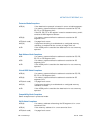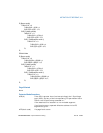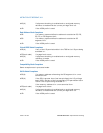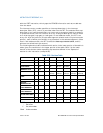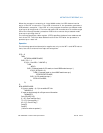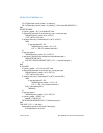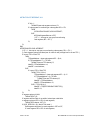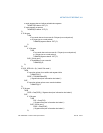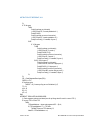
Vol. 2A 3-471
INSTRUCTION SET REFERENCE, A-M
INT n/INTO/INT 3—Call to Interrupt Procedure
INT n/INTO/INT 3—Call to Interrupt Procedure
Description
The INT n instruction generates a call to the interrupt or exception handler specified
with the destination operand (see the section titled “Interrupts and Exceptions” in
Chapter 6 of the Intel® 64 and IA-32 Architectures Software Developer’s Manual,
Volume 1). The destination operand specifies an interrupt vector number from 0 to
255, encoded as an 8-bit unsigned intermediate value. Each interrupt vector number
provides an index to a gate descriptor in the IDT. The first 32 interrupt vector
numbers are reserved by Intel for system use. Some of these interrupts are used for
internally generated exceptions.
The INT n instruction is the general mnemonic for executing a software-generated
call to an interrupt handler. The INTO instruction is a special mnemonic for calling
overflow exception (#OF), interrupt vector number 4. The overflow interrupt checks
the OF flag in the EFLAGS register and calls the overflow interrupt handler if the OF
flag is set to 1.
The INT 3 instruction generates a special one byte opcode (CC) that is intended for
calling the debug exception handler. (This one byte form is valuable because it can be
used to replace the first byte of any instruction with a breakpoint, including other one
byte instructions, without over-writing other code). To further support its function as
a debug breakpoint, the interrupt generated with the CC opcode also differs from the
regular software interrupts as follows:
• Interrupt redirection does not happen when in VME mode; the interrupt is
handled by a protected-mode handler.
• The virtual-8086 mode IOPL checks do not occur. The interrupt is taken without
faulting at any IOPL level.
Note that the “normal” 2-byte opcode for INT 3 (CD03) does not have these special
features. Intel and Microsoft assemblers will not generate the CD03 opcode from any
mnemonic, but this opcode can be created by direct numeric code definition or by
self-modifying code.
The action of the INT n instruction (including the INTO and INT 3 instructions) is
similar to that of a far call made with the CALL instruction. The primary difference is
that with the INT n instruction, the EFLAGS register is pushed onto the stack before
the return address. (The return address is a far address consisting of the current
values of the CS and EIP registers.) Returns from interrupt procedures are handled
Opcode Instruction 64-Bit
Mode
Compat/
Leg Mode
Description
CC INT 3 Valid Valid Interrupt 3—trap to debugger.
CD ib INT imm8 Valid Valid Interrupt vector number specified by
immediate byte.
CE INTO Invalid Valid Interrupt 4—if overflow flag is 1.





